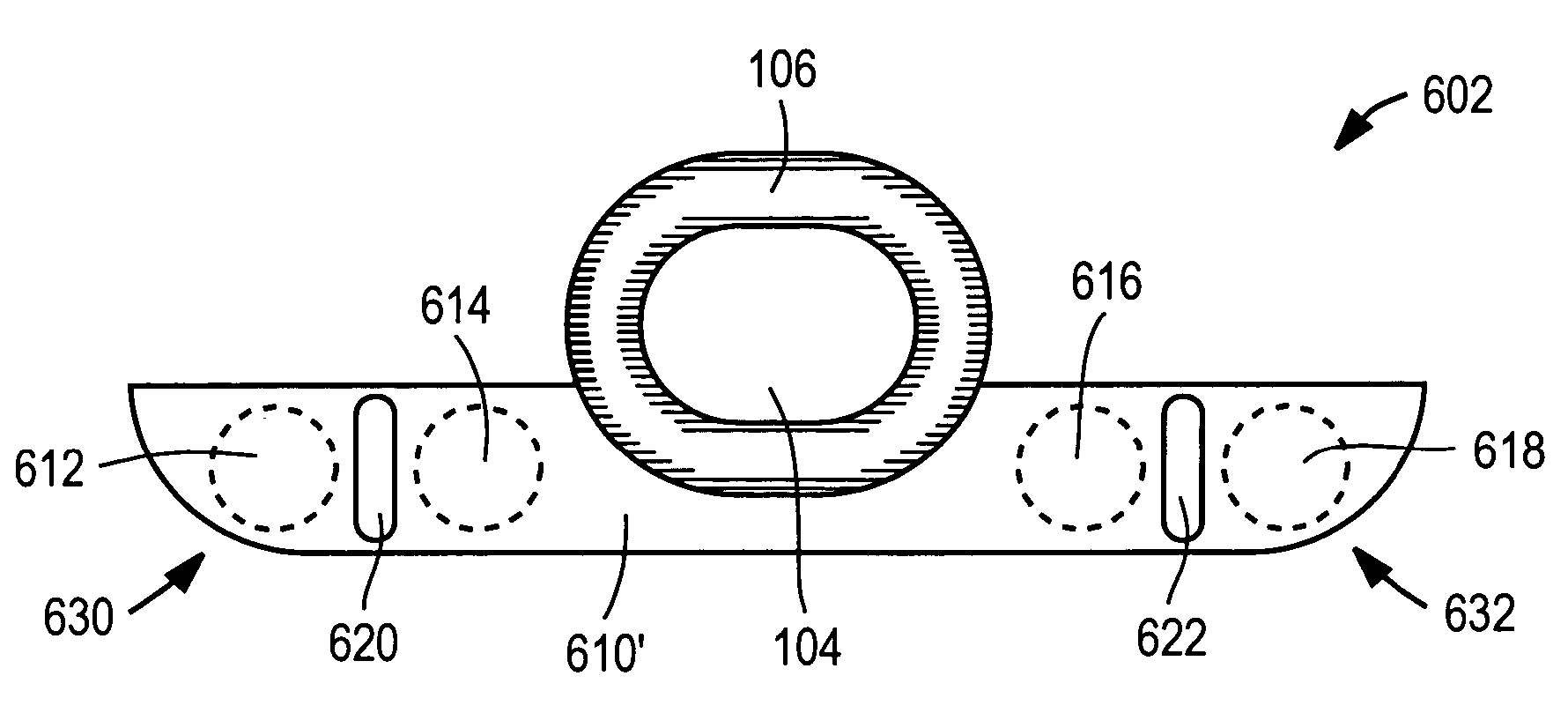Switch assembly having non-planar surface and activation areas
a technology of non-planar surfaces and switches, applied in the field of switches, can solve the problems of affecting the convenient use of electronic devices, affecting the physical selection and touch of users, and the size of electronic devices is becoming smaller and smaller
- Summary
- Abstract
- Description
- Claims
- Application Information
AI Technical Summary
Benefits of technology
Problems solved by technology
Method used
Image
Examples
first embodiment
[0023]FIG. 1 is illustrates an electronic device 101 with a switch assembly in accordance with the present invention. The electronic device 101 may be any type of electronic device that requires the use of switches, for example, a PDA, a cellular telephone, a portable media player, a smartphone, a PDA phone, a mobile manager, a portable computer, etc. The electronic device 101 includes a display 102 and a switch assembly 100 for navigating through the user interface and selecting certain items shown in the display 102 or activating certain applications of the electronic device 101.
[0024]The switch assembly includes a central switch 104, a navigational ring switch 106 adjacent to and surrounding the central switch 104, and two additional switches 108, 109 adjacent to the navigation ring switch 104 and positioned on the left and right sides of the navigational ring switch 106. In one embodiment, the central switch 104 is typically used to select or activate applications or other items...
fifth embodiment
[0035]FIG. 5 illustrates switch assemblies 500, 502, 504 in accordance with the present invention. The switch assembly 500 is functionally identical to the switch assembly 100 shown in FIGS. 1-3, but structurally differs by integrating two switch regions 510, 512 enclosing the navigational ring switch 106. The switch region 510 includes two concave activation areas 514, 518, and the switch region 512 includes two concave activation areas 516, 520. The switch assembly 502 is identical to the switch assembly 500, except that it has smoother edges at the outer corners 530, 532, 534, 536 of the switch regions 510′, 512′. The switch assembly 504 is identical to the switch assembly 500 except that it has even smoother (almost round) edges at the outer corners 538, 539, 540, 542 of the switch regions 510″, 512″.
sixth embodiment
[0036]FIG. 6 illustrates switch assemblies 600, 602 in accordance with the present invention. The switch assembly 602 is functionally identical to the switch assembly 100 shown in FIGS. 1-3, but structurally differs by integrating a switch region 610 enclosing a bottom half of the navigational ring switch 106. The switch region 610 includes four concave activation areas 612, 614, 616, 618, where two of the activation areas 612, 614 are separated by a convex divider 620, and the other two of the activation areas 616, 618 are separated by another convex divider 622. The convex dividers 620, 622 serve as “speed bumps” such that one can tactically feel and distinguish between two activation areas 612, 614 or 616, 168 that are positioned close to each other. Although the switch region 610 encloses only the bottom half of the navigational ring switch 106 in the example of FIG. 6, note that the switch region 610 can be modified to enclose the upper half or the entire navigational ring swit...
PUM
 Login to View More
Login to View More Abstract
Description
Claims
Application Information
 Login to View More
Login to View More - R&D
- Intellectual Property
- Life Sciences
- Materials
- Tech Scout
- Unparalleled Data Quality
- Higher Quality Content
- 60% Fewer Hallucinations
Browse by: Latest US Patents, China's latest patents, Technical Efficacy Thesaurus, Application Domain, Technology Topic, Popular Technical Reports.
© 2025 PatSnap. All rights reserved.Legal|Privacy policy|Modern Slavery Act Transparency Statement|Sitemap|About US| Contact US: help@patsnap.com



